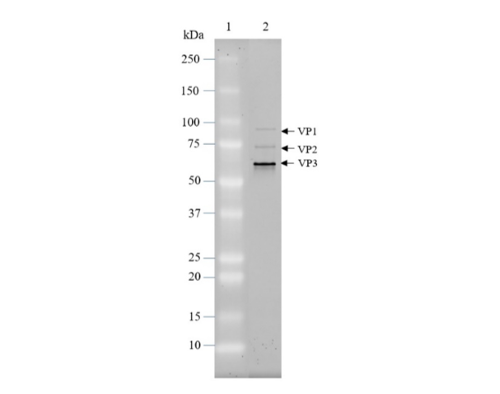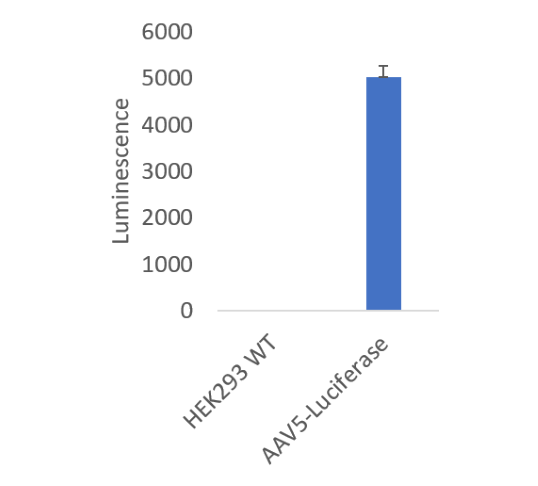78456
AAV5 Luciferase
BPS Bioscience
DESCRIPTION
Adeno-Associated Virus Serotype 5 (AAV5) differs from other parvovirus serotypes according to serological and DNA hybridization data, and AAV5 also uses different inverted terminal repeats (ITRs) compared to other AAV serotypes. AAV5 is the most efficient vector for transducing sensory neurons and is effective at mediating gene transfer into human and murine airway epithelia. In addition, AAV5 vectors show a higher tropism for both mouse and human dendritic cells than AAV1, AAV2, AAV7, or AAV8.
These AAV particles constitutively express the firefly (Photinus pyralis) luciferase gene under the control of a CMV promoter. AAV transduction efficiency can easily be verified by measurement of luciferase activity.
DETAILS
- Notes: Biosafety: Recombinant AAV is inherently replication-deficient and not known to cause any human diseases. Additionally, following transduction, AAV vectors exist episomally and do not integrate into or disrupt the host cell's genome. AAV requires the use of a Biosafety Level 1 facility. BPS Bioscience recommends following all local, federal, state, and institutional regulations and using all appropriate safety precautions. Troubleshooting Guide: Visit bpsbioscience.com/lentivirus-faq for detailed troubleshooting instructions. For all further questions, please email support@bpsbioscience.com.
- Species: Wild-type AAV Serotype 5
- Shiptemp: -80°C (dry ice)
- Warnings: Avoid freeze/thaw cycles.
- Category: Cell Signaling/AAV virus
- Description: Adeno-Associated Virus Serotype 5 (AAV5) differs from other parvovirus serotypes according to serological and DNA hybridization data, and AAV5 also uses different inverted terminal repeats (ITRs) compared to other AAV serotypes. AAV5 is the most efficient vector for transducing sensory neurons and is effective at mediating gene transfer into human and murine airway epithelia. In addition, AAV5 vectors show a higher tropism for both mouse and human dendritic cells than AAV1, AAV2, AAV7, or AAV8. These AAV particles constitutively express the firefly (Photinus pyralis) luciferase gene under the control of a CMV promoter. AAV transduction efficiency can easily be verified by measurement of luciferase activity.
- Formulation: AAV was produced in HEK293-AAV cells and is supplied in PBS-MK (PBS Magnesium-Potassium) buffer containing 0.01% Pluronic F68.
- Supplied As: Two vials (50 µl x 2) of AAV at a titer ≥1 x 1012 TU/ml. The titer is determined by qPCR and will vary with each lot; the exact value will be provided with each shipment.
- Unspsc Code: 41106621
- Unspsc Name: Virus mediated expression vectors or kits
- Applications: Use as a positive control for transduction Optimize transduction assays and track protein expression over time
- Product Type: Viral Tools
- Purification: The purity of the AAV particles was confirmed to be greater than 90% by staining with One-Step Lumitein™ UV Protein Gel Stain (Biotium #21005-1L). The purity will vary with each lot; the exact value will be provided with each shipment.
- Biosafety Level: BSL-1
- Related Products: 78447, 78465, 78474, 78457
- Storage Stability: AAV is shipped with dry ice. For long-term storage, it is recommended to store AAV at -80°C.
- Scientific Category: AAV

